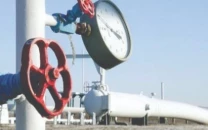Systems of government
Some people want to replace parliamentary system with a presidential system, but most have little understanding of it.

The writer is a PhD Scholar at West Virginia University in the US
In a parliamentary system, such as in UK, the government consists of three institutions — the executive, the legislature and the judiciary. There is a ‘fusion’ of power in the parliamentary form, compared with ‘separation’ of powers with checks and balances in the presidential system. The Congress in the US is not a parliament but an assembly because it does not choose the executive i.e., the president. In a parliamentary system, the prime minister is elected by parliament and his/her cabinet colleagues must be members of that parliament. A written and secular constitution is ‘supreme’ in a presidential system, whereas the parliamentary system is based on ‘parliamentary supremacy’ and no court in the country can challenge its authority. Parliament is the source of all powers in the community and the regions/provinces have no reserved powers.
Institutional stability is the hallmark of the presidential system. In the US, the tenures for both the president and Congressmen are fixed and judges are appointed for a lifetime. There is no single power in the community that is not ‘shared’ with each other i.e., among the legislature, the judiciary and the executive. It is like the $100 note — if you tear it into three pieces, it has no value until you join it into one. Neither an ordinary law nor an amendment in the Constitution can be passed through a simple majority. This divided form of government is common in the US, especially when the president’s party is in the minority in the Congress. To pass a law or money bill/budget, both parties have to make a ‘deal’ or agreement through earmarks and pork barrel spending i.e., financial incentives to Congressmen. Otherwise, deadlocks or gridlocks become common.
The whole decision-making process in the presidential system is based on consent and compromise. If I am not exaggerating, no law can be passed unless some members ‘defect’ or change their loyalties, particularly in the Senate. But this defection is designed and desired by the system in order to avoid ‘majority oppression’ as can happen in a parliamentary democracy. The party system is weak and disorganised compared with the parliamentary form where parties and their leaders are very powerful. In the presidential form, party leaders are merely titular or decorative. There is also explicit distribution of powers between the federal government and the regional governments. The Supreme Court has the ultimate power to interpret both law and the constitution.
Moreover, the electoral process in both the systems is completely different. The presidential system is based on a two-tier election process i.e., primary elections and general elections. People elect both the candidates/nominees and representatives for all types of executives and legislatures in the country. People also elect the president and members of the Congress separately and directly for their fixed terms in office. No one can dissolve the Congress. The election of the president is lengthy, complicated and expensive as election campaigns start about a year before the elections. The same is true for the Senate races. In the UK, on the other hand, the whole parliamentary election exercise is completed in only three weeks.
Published in The Express Tribune, March 5th, 2013.














COMMENTS
Comments are moderated and generally will be posted if they are on-topic and not abusive.
For more information, please see our Comments FAQ